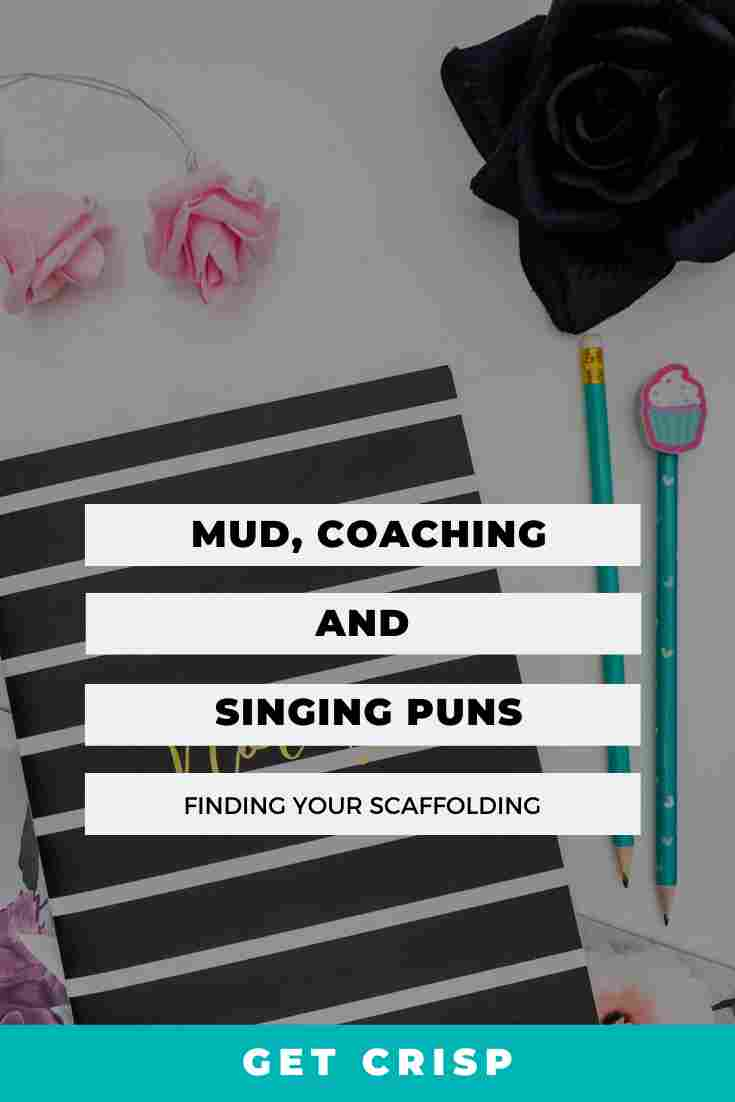It seemed like a good idea at the time. Like that time in the ‘80s when all the girls were sporting legwarmers (as a fashion item, not a tendon aide) until the whole world seemed to turn banana-yellow and popsicle-pink. Please stop, it hurts my eyes.
It’s pretty much the same with website sliders
Created by web designers and accepted as a web-page-design-rule-of-thumb, the humble slider was featured on all the best sites on the interwebs.
However, the thing about sliders is that they are outdated. They also don’t work for you. Because your copy and supporting visuals should inspire trust in your reader, so when they land on your Home page,
and you go moving all your messaging and visuals around on them,
how does that represent that you care about their experience?
The thing is, sliders with copy say:
*Slider 1* This is the most important message.
*Slider 2* Hang on, THIS one is the most important image.
*Slider 3* No wait, I’ve got it. This is the message we want you to read.
Does that sound like a brand comfortable in their authority and trustworthy to be consistent? You want your ideal clients to be able to easily articulate to themselves why you’re the best person for the job. How will you do that when your initial website presence suggests you don’t even really know what you’re talking about?
Hold on to your hats, good people, I’m here to preach some home truths from a copywriting perspective. Despite what you have grown up being told, I don’t believe website sliders are actually necessary and in some cases could even be doing more harm than good.
The reasons? Let me break them down for you.
The numbers don’t lie
The number one most important reason is this: you know all those smart people who research trends and study analytics? Well, they have developed stats over a long period of time that show that no one clicks on sliders (well, technically only 1% do). Whether that is accidental or intentional, the brainiacs can’t say. What they can say that is that your slider has very low click-through rates.
Annnnd, that should be enough for you. What have you invested time, energy, brain power, and copywriters on your website for if you’re going to ignore conversion facts?
But, you know, I write so engagingly and you guys seem to like me so I’ll carry on.
No one likes a website that yells into your face.
Sliders take control away from the reader visiting your site. They are moving objects that run regardless of whether the reader is interested. This can result in a shift of reader focus from the reason they visited in the first place. Sliders are terribly ignorant of self-paced reading and can often look like ads or ‘offers’ which the reader then just disregards.

It’s all about timing (and SEO)
The next two reasons are enemies of SEO. While hi-res images in your slider are slithering away in the background relying on JavaScript (aaaghhh), they are slowing down the site; bad, bad, bad for SEO. Plus, more images means less useful content, another foe of SEO. I may have cried a little writing this one.
(Though totally in love with how “another foe of SEO” sounds!)
Also, in our speedy-on-the-go lives, people are accessing our websites on all sorts of devices with varying support (God forbid – 3G) and sliders just don’t display well on mobiles, if they display at all.
Sliders disrespect your Headers
The slider pushes the content down and shakes it all about. Why would this ever be a good idea? Your benefit statements and brand promises should be front and centre, above the fold and utilising good headers, and not after an imposed series of images that may have already bored/annoyed/confused your reader.
In the best interests of objectivity, sliders may have a place for your business. You may be demonstrating how your product works or how many different ways your 45-way dress can be worn. For most, however,
it’s time to think about moving on
Eliminating the slider does not mean you have to compromise on design. There are a number of options for you to consider.
- Use one hero image with supporting copy that tells the reader what they want to hear and addresses why they are there in the first place.
- Replace it with your call to action. A well worded, clickable, I-need-this-in-my-life CTA is worth its weight in sliders.
- If it is important for you to include your slider, move it down to the bottom of the page and move your intro copy up. Feed your audience the important, juicy, conversion-inducing stuff straight up.
- Another option is to put your slider on a different page to your Home page. Perhaps a Shop page or even your About.
Website sliders. They give me the heebie-jeebies. Let’s stick to the pulled pork variety.
Mud, Coaching, and Singing Puns: The Universal Struggle of Finding Your Scaffolding
Here via my email? Click here to check out what I'm yodelling about. It can sound pretty glam, being a professional musician. It's often not. It's darn hard yakka, and I tip my hat to anyone making a go of it. I worked for years and years just to land the voice work I...
10 Of The Most Frequently Asked Questions About Copywriting
Sometimes, I forget not everyone needs high level copywriting advice for their word nerdery. I’m most often reminded of this when I’m halfway through a Crisp Copy Class live call and someone asks me something I’m sure they must already know, so I’ve purposefully...
Go On, Fire Your Copywriter
As a copywriter who doesn't have a backup plan, I'm not afraid of AI - for a couple reasons: 1. I'm an editor Some folk are not. They prefer writing from scratch, they're true concept creators. They don't like to take what someone (or something else) has come up with...
© Copyright 2016 - 2024
Jay Crisp Crow + Crisp Copy
If you steal my words I'll
send my teenagers to your house
...with their kitten

Crisp Content
Want mouthwatering words that open hearts (and bank accounts)?



